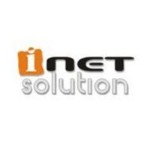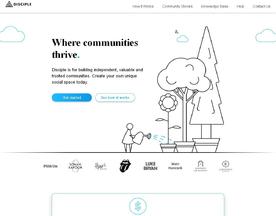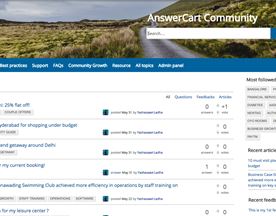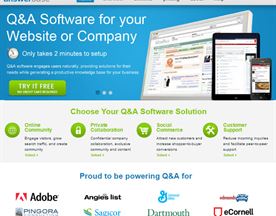The digital age has seamlessly woven itself into the fabric of our lives, and with it, the rise of online communities has become evident. These communities are more than just private spaces selling online courses where individuals interact; they’re the modern-day campfires, gathering spots where stories are shared, bonds are formed, and the collective wisdom grows.
If you’ve ever been a part of a vibrant online community, you’d know that the feeling of belonging and the wealth of shared knowledge can be transformative.
But what’s the magic behind these thriving communities? Is it merely about gathering a group of people online? Or is there more to it? As you might have guessed, it’s not just about numbers. It’s about the space itself—the software platform that powers these communities.
Just as the ambiance and setting of a physical space can influence our interactions, the features and functionality of an online community platform can shape the dynamics of the group.
Now, imagine you’re hosting a party. The venue you choose, whether it’s a cozy living room or a spacious banquet hall, will significantly influence the party’s vibe. Similarly, when building an online community, the software you select acts as your ‘venue.’
It dictates the scale of your community, the nature of interactions, and even the kind of members you’ll attract. For instance, a community built on a platform tailored for gamers will naturally have a different vibe from one designed for educators.
This brings us to an important question: In the vast ocean of online community software options, how do you identify the one that aligns with your vision? Whether you’re a brand aiming to foster deeper relationships with your customers, a passionate individual wanting to connect with others who share your enthusiasm, online course business or an organization aiming to provide a support and membership platform just for its members, the choice of software can make all the difference.
With so many nuances to consider, from user interface to moderation tools to integration capabilities, the decision-making process for best community platform might feel daunting. But fret not! Together, we’ll embark on a journey to demystify the world of online community software.
We’ll explore the essential features to look for, understand the different types of communities you can build, and most importantly, help you find the perfect platform that resonates with your business plan and goals.
So, as we dive deeper, remember this: an online community is more than just a space. It’s a living, breathing entity, shaped by its members but scaffolded by the software it’s built on. And just like a well-chosen venue can elevate a party, the right software can be the catalyst that transforms a group of strangers into a thriving, engaged community.
Best online community platforms and software community platforms can elevate user interactions, fostering deeper connections. Choosing the right online platform is crucial, as it shapes the community’s dynamics and success.

The Essence of Online Communities
At the heart of the digital landscape, online communities stand as pillars of connection, collaboration, open source community platform and shared knowledge. But what truly gives them their essence? Why are they so much more than just another corner of the internet? Let’s dive deeper to uncover the magic behind these vibrant spaces.
Purpose-driven Interactions
Unlike the fleeting exchanges on social media or comment sections, online community interactions are deeply rooted in shared goals, interests, or pursuits. Whether it’s a community of filmmakers discussing techniques, a support group for a specific software solution, or fans of a particular author dissecting their latest book, the interactions here are rich, meaningful, and driven by a shared purpose.
This sense of purpose binds members together, making their conversations more profound and impactful.
Continuous Engagement
One of the standout features of successful online communities is the constant hum of activity. It’s not just about the initial buzz; it’s about sustaining that buzz over time. Members keep returning, not just because they have to, but because they want to.
They look forward to the latest discussions, updates, and the chance to connect with fellow members. This continuous engagement ensures a lively and dynamic online community platforms one that doesn’t stagnate over time.
Building Relationships
While online communities start as platforms for discussions, they often evolve into spaces where genuine relationships are forged. Over time, members get to know each other, even if they’ve never met in person.
They celebrate each other’s achievements, offer support during challenges, and sometimes, even form friendships that transcend the digital realm. It’s this deep sense of camaraderie and connection that turns casual users into loyal community members.
A Platform for Growth and Learning
Beyond connections and interactions, online communities are hubs of knowledge exchange. Experienced members mentor newcomers, diverse perspectives lead to richer discussions, and the collective wisdom of the group ensures continuous learning.
Whether it’s mastering a new skill, getting insights into a subject, or simply broadening one’s horizons, being part of an online community can be a transformative experience.
Empowerment and Voice
Online communities give individuals a platform to voice their opinions, share their experiences, and make an impact.
Members feel empowered, knowing that their contributions can influence the community’s direction and even bring about real-world change in some cases.
By understanding these core characteristics, we begin to see why the choice of software is so vital. The right platform can enhance these elements, ensuring that the community not just survives, but thrives.
Key Points:
- Online communities are driven by shared goals and interests, making interactions meaningful.
- They promote continuous engagement, ensuring a dynamic and active space.
- Over time, these communities become spaces for deep relationships, learning, and empowerment.
- The right software can significantly amplify these core community characteristics.

Software Tools to Build Your Online Community
In the realm of online community building, the software you choose is akin to the foundation of a house. It determines the structure, stability, and overall experience of your community. As such, it’s vital to choose a community management platform that aligns with your community’s goals and needs.
Let’s delve deeper into some of the top contenders in the online and community website builder and software space.
Discord.com
- Overview: Initially designed for the gaming community, Discord has transformed into a hub for all kinds of communities, from study groups to fan clubs.
- Key Features: With its unique blend of text and voice channels, Discord facilitates both real-time and asynchronous communication. It’s highly customizable, with roles, permissions, and even bots to automate tasks.
- Why it’s useful: Discord’s flexibility allows for both casual chats and structured discussions. The platform’s intuitive design promotes interaction and engagement, making it a favorite among many community managers.
MightyNetworks.com
- Overview: Mighty Networks is a platform designed for creators, educators, and brands aiming to build niche communities around their content or services. Easy to create your own branded community with a custom domain name.
- Key Features: Beyond community interactions, it offers courses, events, and built-in monetization options. Its segmentation feature allows for the creation of sub-communities or groups within the main community.
- Why it’s useful: For those looking to offer more than just a discussion space, Mighty Networks provides a holistic approach. The ability to monetize directly through the platform is a significant draw for creators and businesses.
Slack.com
- Overview: Popularly known as a team collaboration tool, Slack’s adaptable features make it suitable for community building, especially for professional and industry-specific networks.
- Key Features: Slack revolves around ‘channels,’ which can be public or private, allowing for organized discussions on specific topics. It also offers direct messaging, private messaging and integrates seamlessly with a plethora of third-party apps.
- Why it’s useful: For communities that prioritize professional networking or industry discussions, Slack offers a familiar and efficient environment. Its integrations also make it a powerhouse for automating tasks and enhancing community management.
Facebook.com
- Overview: Leveraging the vast user base of Facebook, Facebook Groups provides a platform for creating communities within the social media giant’s ecosystem.
- Key Features: Features like polls, events, and the ability to pin important posts make community management straightforward. The platform also offers analytics to gauge community engagement.
- Why it’s useful: For those looking to tap into an existing audience or prefer a platform where members are already active, Facebook Groups is a convenient choice. It’s particularly suitable for casual or local communities.
Circle.so
- Overview: A modern take on community platforms, Circle combines the best of forums and chat apps to offer a fresh and intuitive community-building experience.
- Key Features: Circle boasts a clean interface, threaded discussions, and customizable spaces. It integrates easily with tools like Zapier, allowing for extended functionality.
- Why it’s useful: For communities that want the structure of traditional forums but with a modern twist, Circle stands out. Its emphasis on customization and integration makes it a flexible choice for diverse community needs.
As you explore these tools, it’s essential to remember that while features and capabilities matter, the real test of a platform is how well it aligns with your own community here’s ethos and goals.
Key Points:
- The choice of community software lays the foundation for the community’s success.
- Each platform has its unique features and strengths, catering to different community types and needs.
- It’s crucial to select a platform that resonates with your community’s goals, ethos, and desired engagement level.

Deep Dive into Community Building Principles
Building a thriving online community isn’t just about having the right software; it’s about understanding the underlying principles that drive human connections.
Let’s take a closer look at the foundational principles of community building.
The Psychology of Community Building
At the core of every community is the human desire to connect, belong, and share experiences. This innate need can be traced back to our ancestors, who thrived better in groups support community rather than in isolation. Online communities tap into:
- Shared Identity: Members often have a shared passion, goal, or challenge that binds them together. This sense of shared identity fosters a feeling of belonging.
- Safety and Trust: In a world full of digital noise, online communities can offer a safe space for genuine conversations, provided there’s a foundation of trust.
- Validation and Recognition: Contributing to discussions, sharing knowledge, or even showcasing talents can garner validation and recognition, fulfilling the innate human need for appreciation.
Lifecycle of a Community Member
Every member undergoes a journey within the community, often categorized into stages:
- Newcomer: At this stage, members are exploring, understanding the norms, and gauging if the community aligns with their interests.
- Regular: Once comfortable, they transition to regular contributors, participating in discussions and forming bonds with other members.
- Active Contributor: They not only participate but may initiate discussions, share resources, and help newcomers.
- Core Member or Advocate: These are the pillars of the community. Having spent a significant amount of time, they often take on leadership roles, guiding discussions, and even mentoring others.
The Role of Community Managers and Leaders
Behind every successful community is a dedicated team of managers and leaders. Their roles encompass:
- Setting the Tone: They establish the community’s ethos, ensuring it’s welcoming and inclusive.
- Guidance: They steer discussions, address conflicts, and ensure the community remains true to its purpose.
- Feedback Loop: Community leaders are the bridge between members and the platform, taking feedback and implementing changes.
- Evolution: As with everything, communities evolve. Leaders ensure this evolution aligns with the community’s core values.
The Balance of Giving and Taking
For a community to sustain itself, there needs to be a balance between giving and taking. While members seek knowledge, connections, or resources (taking), they should also feel encouraged to contribute, share, and help others (giving). This symbiotic relationship ensures a continuous flow of value within the community.
Diversity and Inclusivity
Modern communities thrive on diversity. Different perspectives, backgrounds, and experiences enrich discussions and promote holistic learning. Ensuring inclusivity, where every member feels seen, heard, and valued, is crucial. It’s not just about numbers but about ensuring every voice matters.
By understanding these principles, one can navigate the challenges of community building more effectively. It provides a lens to view not just the ‘what’ of community activities but the ‘why’ behind them, ensuring every community plan and decision aligns with the core essence of community building.
Key Points:
- Community building taps into fundamental human desires of connection, validation, and belonging.
- Members undergo a lifecycle within the community, transitioning from newcomers to core advocates.
- Community managers and leaders play pivotal roles in guiding, nurturing, and evolving the community.
- A successful community promotes a balance between giving and taking, ensuring sustained value.
- Embracing diversity and championing inclusivity enriches the community experience.

Best Practices for Effective Community Management
Managing an online wordpress based community platform is both an art and a science. It requires a harmonious blend of understanding human behaviors, leveraging technology, and employing strategic planning.
To foster a vibrant and engaged, best online community platform, there are certain best practices that community managers should adopt.
Content Strategy for Communities
Just like any digital platform, content is king even in online communities.
- Regular Updates: Keep the community informed about the latest news, updates, or changes related to the topic or the platform itself.
- Curated Discussions: Introduce weekly discussion threads or monthly themes to steer the conversation and keep members engaged.
- Guest Contributions: Inviting experts or influential members to share insights or write posts can bring in fresh perspectives.
Reward Systems and Recognition
Recognizing and rewarding active members can enhance engagement and loyalty.
- Badges and Titles: Introduce badges for members who reach certain milestones or contribute significantly. Titles like ‘Top Contributor’ or ‘Community Expert’ can motivate members.
- Exclusive Content: Offer active members access to exclusive content, webinars, or resources as a token of appreciation.
- Spotlight Features: Regularly spotlight members, their stories, or contributions to make them feel valued.
Dealing with Challenges
Every community faces challenges. How they’re addressed can make or break the entire community’s spirit.
- Conflict Resolution: When disagreements arise, ensure they’re addressed promptly. A clear process for reporting and addressing grievances is crucial.
- Tackling Trolls: Online communities can sometimes attract trolls. Having a strict policy against trolling and ensuring quick action can maintain community health.
- Feedback Mechanism: Allow members to voice concerns or provide feedback. This not only makes them feel heard but can also offer valuable insights for improvement.
Ensuring Active Participation
A community’s vibrancy is gauged by its activity.
- Regular Events: Host webinars, Q&A sessions, or virtual meetups to keep members engaged.
- Challenges and Contests: Introduce monthly challenges or contests related to the community’s theme. It could be as simple as a photo contest or as elaborate as a project showcase.
- Polls and Surveys: These are simple tools to engage members, gather opinions, or decide on community matters.
Safety and Security
In the digital age, ensuring the safety and security of community members is paramount.
- Clear Guidelines: Establish and regularly update community guidelines that emphasize respectful interactions.
- Data Protection: Assure members that their personal data is secure and won’t be misused. Regularly update security protocols.
- Moderation Tools: Use software features that allow for content moderation, filtering, and reporting to maintain a safe environment.
Adapting and Evolving
No community remains static. As interests shift, technologies advance, and members come and go, the community needs to adapt.
- Stay Updated: Regularly update the platform, integrate new features, and stay in tune with technological advancements.
- Revisit Goals: Periodically revisit the community’s goals and objectives. Ensure they align with the current scenario and member expectations.
- Member Feedback: Engage long-term members in discussions about the community’s direction. Their feedback can be invaluable in guiding evolution.
In essence, effective community management is a continuous journey of learning, adapting, and growing. By understanding and implementing these best practices, community managers can ensure their communities not only thrive but also provide lasting value to their members.
Key Points:
- A strategic content approach keeps the community engaged and informed.
- Recognizing and rewarding members fosters loyalty and active participation.
- Addressing challenges promptly and effectively ensures community health.
- Prioritizing safety and security builds trust.
- Communities need to continuously adapt and evolve to remain vibrant and relevant.

FAQ: Navigating the World of Online Community Software
Building and nurturing an online community your own website is a journey, and online course, like all journeys, it’s natural to have questions along the way.
Here, we’ll address some of the most frequently asked questions about online community software to help you make informed decisions.
How do I choose the right community software?
Choosing the right platform isn’t a one-size-fits-all decision. Start by understanding your own community space’s primary purpose, the expected size, and the features you deem essential. Additionally, consider the platform’s scalability, user-friendliness, and potential integration capabilities.
It’s also beneficial to take into account feedback from similar communities or even run a pilot phase branded community platform before making a final decision.
Can I migrate my community to another platform later?
Absolutely! While the idea of migration might sound daunting, most reputable platforms offer data export features. However, be prepared for some technicalities in the process.
Before migrating, ensure you communicate with your community members about the move, the reasons behind it, and any potential changes they might experience.
Is it necessary to have a moderation team?
Yes, especially as your community and discussion forum grows. A moderation team plays a pivotal role in maintaining the community and discussion forum’s health by ensuring discussions remain respectful, on-topic, and in line with community guidelines.
They can also help in organizing events, managing content, and facilitating member interactions.
How do I monetize my community?
There are several avenues for monetization. Some platforms, like Mighty Networks, offer built-in, monetization tools and features.
Alternatively, you can explore options such as ads, affiliate marketing, sponsored content, or introducing premium memberships and exclusive content for paying members in app purchases.
What is the advantage of niche communities?
Niche communities cater to specific interests or goals, ensuring members are highly engaged and passionate.
The focused nature of the activity feed such communities often results in richer discussions, a stronger sense of belonging, employee engagement and higher member loyalty compared to broader communities.
How do I engage inactive members?
Engaging inactive members requires a mix of strategies. Regularly updating content, introducing new discussion topics, hosting live events, or webinars, and running challenges or competitions can spark interest.
Additionally, periodic newsletters highlighting community achievements or interesting discussions can remind inactive members of all the tools and value the community offers.
Is it essential to have community guidelines?
Definitely! Guidelines act as a roadmap for members, ensuring they understand what’s expected of them.
Clear guidelines help maintain a positive atmosphere, prevent conflicts, and ensure that interactions are productive and respectful.
How often should I interact with my community?
Consistent interaction helps foster trust and build community engagement too. While the frequency can vary based on the community’s nature, ensuring a regular presence, whether through daily check-ins, weekly updates, or monthly webinars, helps keep the community vibrant.
Can I integrate my community with other tools?
Yes, many modern community platforms offer integration capabilities, especially with tools like Zapier. Integrations can help automate tasks, gather analytics, or enhance the best community platform’s functionality.
Do I need technical knowledge to set up a community?
While basic communities can be set up without much technical know-how, having some technical understanding can be beneficial, especially if you’re looking for advanced customizations or integrations other community platforms.
Many platforms, however, pride themselves on user-friendly interfaces, ensuring even those without a tech background can set up and manage their communities effectively.
Key Points:
- Choosing the right community software requires understanding your community’s unique needs and goals.
- Migration is possible but might require technical expertise.
- Moderation, clear guidelines, and regular engagement are pillars of a successful community.
- Monetization and integration with other tools can enhance the community’s value and functionality.
- Even without technical knowledge, many platforms are designed to be user-friendly and intuitive.

Incorporating Technology and Innovation in Community Building
As we advance into an era characterized by rapid technological evolution, online communities are at the forefront of experiencing these shifts. Incorporating technology and innovation best community platforms not only enhances the user experience but also redefines the way communities interact, grow, and thrive.
Let’s explore some groundbreaking innovations that are reshaping the online community engagement landscape.
The Rise of AI in Community Management
Artificial Intelligence (AI) is no longer just a buzzword; it’s actively transforming community management.
- Chatbots for Onboarding: Implementing AI-driven chatbots can guide new members, answering queries, and introducing them to community features.
- Automated Moderation: AI can be trained to detect and flag inappropriate content or spam, ensuring community guidelines are upheld.
- Personalized Experiences: AI can analyze user behavior and preferences to provide personalized content recommendations, enhancing member engagement.
Virtual Reality (VR) and Augmented Reality (AR) in Communities
The immersive experiences offered by VR and AR are starting to make their mark in online communities.
- Virtual Meetups: Instead of traditional video calls, members can interact in a virtual space, making discussions more engaging and interactive.
- AR-enhanced Tutorials: For communities centered around DIYs, crafts, or tech, AR can provide real-time tutorials, enhancing the learning experience.
- Virtual Community Tours: New members can take a VR tour of the community, understanding its features and highlights in an immersive manner.
Blockchain and Decentralized Communities
With the increasing emphasis on data privacy and ownership, blockchain technology offers a new paradigm.
- Decentralized Platforms: Unlike traditional platforms controlled by a single entity, decentralized communities give power back to the users, ensuring data security and transparency.
- Token-based Rewards: Blockchain allows for the creation of community-specific tokens, which can be used to reward active members or access premium content.
- Immutable Records: Any community guidelines, agreements, or significant decisions can be stored on the blockchain, ensuring transparency and immutability.
Integration of Biometrics
As professional networks and communities grow, ensuring the authenticity of members becomes crucial, and biometrics offers a solution.
- Voice and Face Recognition: These can be used during sign-ups or logins to ensure the authenticity of members and prevent impersonation.
- Emotion Analysis: By analyzing voice tones or facial expressions during virtual meetups, community managers can gauge member sentiments in real-time.
Adaptive User Interfaces (UI)
With the diverse range of devices, mobile apps and user preferences, adaptive UIs ensure every member gets an optimal experience.
- Responsive Design: Whether accessed via a desktop, tablet, or mobile, the community platform adjusts for the best user experience.
- Dark Mode and Accessibility Features: Catering to different user needs, from dark mode for nighttime browsing to features for visually impaired members, enhances inclusivity.
Incorporating these technologies android apps and innovations not only amplifies the community experience but also positions the community as forward-thinking and user-centric. However, while tech can enhance interactions, the heart of a community still lies in genuine human connections.
Balancing technology with authentic interactions ensures that the community remains a warm, welcoming space, even in the digital age.
Key Points:
- AI is transforming community interactions, from onboarding to content moderation.
- VR and AR offer immersive experiences, elevating discussions and tutorials.
- Blockchain introduces a paradigm of decentralized communities with increased transparency.
- Biometrics and adaptive UIs ensure security and an optimal user experience.
- While technology enhances the community experience, genuine human connections remain irreplaceable.

Conclusion
As we’ve journeyed through the intricate tapestry of online communities, one thing stands out: these platforms are not merely about technology or software; they’re about people. At the heart of every click, post, or shared link, there’s a human seeking connection, knowledge, or simply a sense of belonging.
Online community software serves as a bridge, connecting individuals across geographies, cultures, and beliefs. The choice of software, as we’ve emphasized throughout, is paramount. It the right online community platform that acts as the foundation, shaping interactions, guiding growth, and ensuring that every member feels valued.
However, beyond the algorithms and user interfaces, it’s the shared stories, collective wisdom, and mutual respect that truly make a community thrive.
Incorporating the latest technologies, from AI to VR, can certainly enhance the user experience and create online courses. Yet, as community builders or managers host events, our primary role remains: to foster an environment where genuine connections are formed.
It’s a world where a newcomer feels welcomed, contributions are recognized, and every voice, regardless of its origin or tone, is heard.
As we step into the future, online communities will undoubtedly continue to evolve. New technologies will emerge, member expectations will shift, and the digital landscape will undergo transformations.
Amidst these changes, the core essence of communities — the human connection — will remain constant.
To all aspiring community builders, remember that you’re not just creating a platform; you’re crafting experiences, nurturing relationships, and in many ways, changing lives.
As technology continues to advance, let it be a tool that enhances human connections rather than replacing them. After all, in the vast digital cosmos, it’s these connections that shine the brightest.















